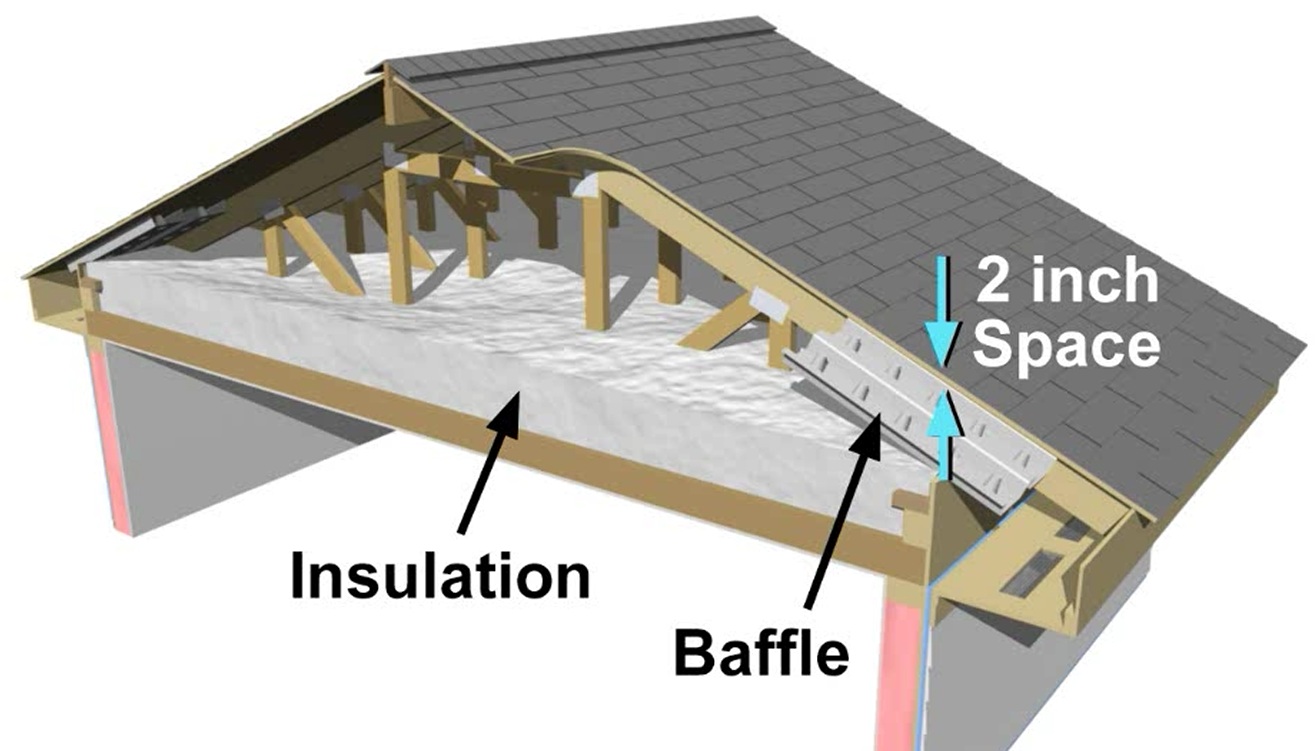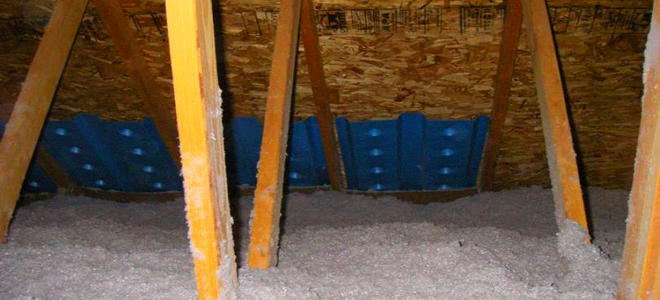

The problem is that I cannot physically get to the eaves to install a baffle because of the impossibly shallow roof with these funny 2 x 6 supports that I cannot crawl over. I've been working on my attic insulation lately so your topic is very helpful to me. (This approach is used when the triangular… The preferred way is for the baffles to begin above the ventilated soffit and extend all the way to the small attic above the second-floor ceiling. In a traditional Cape Cod house with 4-foot kneewalls, there are two ways to install ventilation baffles. The deeper the insulation, the longer the baffles have to be. The baffles should begin above the ventilated soffit - just to the exterior side of the plane of the wall sheathing - and should extend far enough into the attic that they terminate above the top of the insulation on the attic floor. In a house with a vented unconditioned attic, ventilation baffles are only needed near the eaves. For more information on this issue, see All About Attic Venting.

However, ventilation channels aren’t able to perform the miracles that some ventilation advocates claim. To a limited extent, these air channels can help keep roof sheathing dry and can reduce the chance of ice dam formation. The value of providing ventilation channels under roof sheathing is often exaggerated. (Wind-washing degrades the thermal performance of air-permeable insulation materials like fiberglass, mineral wool, and cellulose.) A baffle performs three functions: it defines the depth of the air gap it keeps insulation from intruding on the air gap and (if properly installed) provides an air barrier to limit wind-washing of the insulation. To establish a ventilation channel, it’s usually necessary to install some kind of baffle. When the wind is blowing, these ventilation channels allow air to move from the soffit vents to the ridge vents. If you're planning to install any type of insulation in your attic, this government brochure, Do-It-Yourself Guide to Sealing and Insulating with Energy Star, can provide more information.Roofs often require ventilation channels directly under the roof sheathing - either for a short section of the roof (for example, near the eaves) or for the entire roof, from soffit to ridge. With blown insulation, you also need to block the upper ends of the rafter vents to be sure the insulation doesn't blow into the attic rafter vents. The vents come in four foot lengths, and you must buy the right width for your rafters.Īfter the attic baffles are installed, you're ready to install your insulation out to the very edge of the attic floor. To install attic rafter vents, you staple them to the roof decking sitting on top of the rafters.

The vents are made from polystyrene foam which is stiff so they’ll remain rigid, and won't disintegrate over the years. These vents are installed starting where the attic ceiling meets the attic floor, and extending up several feet to create a clear channel for air flow. Attic rafter vents (also called insulation baffles, baffle vents or proper vent) are used to prevent insulation from blocking the space between rafters, which is needed for this ventilation. When you have insulation in the attic, you have to be sure it doesn't block the flow of fresh air from the soffit vents below the eaves, up and out through the ridge vent (or gable vent in older houses).



 0 kommentar(er)
0 kommentar(er)
